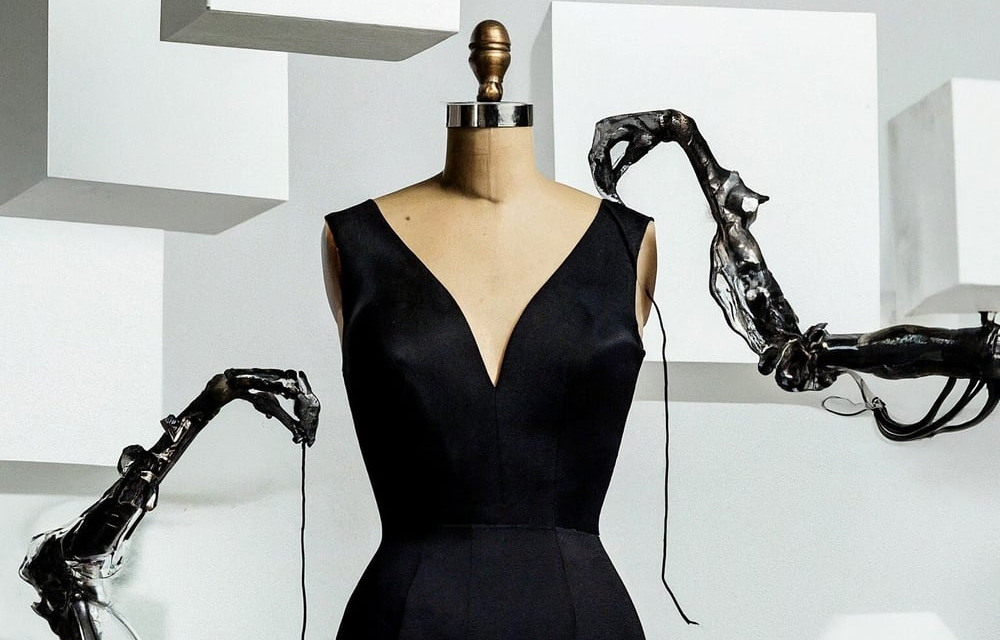"AI's Impacts on the Fashion Industry: From Product Sheets to Design"

Generative AI, which offers bespoke text and imagery, is beginning to gain favour among the public. Within the fashion and luxury sectors, it's used to create advertising campaigns, product pages, customer experiences, and the products themselves. While AI has become vital for brands and retailers, it also inspires trepidation. In this article, we explore the impact AI has had on practices within the fashion and luxury sectors, particularly marketing and creative endeavours.
In late October, Amazon used AI-generated images for its campaigns thus highlighting the value of artificial images for the commercial industry. Brands and customers alike are becoming familiar with consumer-generated AIs such as Dall-E and Midjourney. More options are being developed to automatically remove products from an image and place them onto computer-generated sets. Brands must now learn to utilise the potential of artificial intelligence.
AdCreative.ai, a Paris-based enterprise established two years ago, offers a tool that seamlessly combines aspects of Canva and ChatGPT to suit commercial goals. Cédric Derozier, the sales director, explains that their AI can produce campaign visuals within mere minutes based on the targeted audience and specific brief. Phrases and calls-to-action are automatically generated from product pages. According to Derozier, the creation of similar videos will be possible soon. While there are growing concerns about AI infringing upon the unique works of photographers and illustrators, Derozier assures that the images they produce are from a bank of 100 million royalty-free images.
The usage of AI doesn't stop at creating visuals; it can also study a product and generate the product information sheets accordingly. Brands are thus able to customise the AI's output based on their specific needs, language, and highlight a product's unique selling points. Yosr Mhiri, co-founder of YZR and a specialist in the field, works with Decathlon, La Redoute, Monoprix, and Leclerc. He emphasizes that partial automation is essential for survival and not merely a competitive advantage considering the predicaments of the current sector where enabling teams to have more time usually leads to increased success.
Sébastien Garcin, Chairman of YZR, admits his fascination for the fashion and luxury sectors primarily because of the meticulous attention they pay to product visuals. Good quality photos enable AI to better describe a product, translating to characteristics such as colour, material, and cut. Garcin further explicates that with the fast-moving nature of collections, AI solutions address the requirements for quick product layout.
What next for AI versus designers?
AI can already perform actions based on consumer expectations through campaigns and product pages. Now, the main controversy revolves around the possibility of AI influencing the creative process behind clothing. Could AI create suitable patterns using a mere description? A number of brands have already decided to experiment with this possibility; for instance, The Kooples will showcase an AI-generated collection at the CES show in Las Vegas in January 2024, created in collaboration with Imki, the AI-specialist start-up.
Anouck Duranteau-Loeper, CEO of Isabel Marant, shares his skepticism about replacing creative directors with AI, in a speech at the Fashion Reboot event organised by the French Fashion Institute. Duranteau-Loeper believes that the essence of beauty lies in imperfection and surprise, traits that could be lost in the 'perfect' creations of AI. He also cited the rise of completely virtual influencers who offer a regular flow of publications via AI.
AI aiding counterfeit practices.
On the other hand, counterfeiters will be few and far between, as will brands that are known to be "inspired" by other labels. During the summer, three designers in the United States launched a lawsuit against the Chinese company Shein, whose AI is said to have simply copied their designs. It's a system that sheds light on the company's capacity to generate 8,000 new designs a day. A practice that is all the more worrying for the fashion industry, given that while AI must rely on what already exists in order to "create", it can itself add or remove the famous "distinctive elements" that make the difference between a similar product and a counterfeit.




